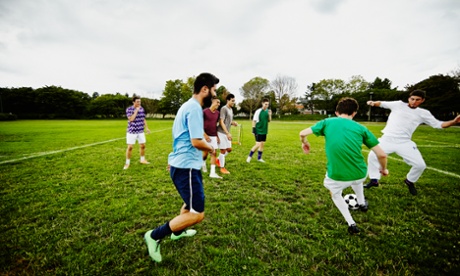
About 1.5 million people in the UK play “small-sided” football each week. The Football Association estimates that there are 30,000 teams of between four and seven people playing regularly. But if you were thinking that five-a-side is just an excuse for unfit middle-aged people to have a quick kickabout before adjourning to the pub, then an editorial in this month’s British Journal of Sports Medicine brings interesting news. “Recreational football is effective in the treatment of non-communicable diseases,” it says.
Football reduces the risk of heart and lung disease and diabetes by lowering blood pressure and body fat, improving cholesterol levels and the efficiency of the heart. What is more, it does this for everyone who plays football, whatever their age or gender and however little they have played before. Even more surprisingly, perhaps, it is better at improving fitness than almost any other sport, including swimming and cycling. Only running is its equal.
A study reported in the Scandinavian Journal of Medicine and Science in Sports put 41 women who took no exercise and had mild high blood pressure into either a football or a control group. It found that playing football for an hour three times a week for 15 weeks reduced blood pressure, cholesterol and weight (by 2.3kg), and improved cardiovascular fitness.
Similar effects have been seen in studies of homeless people and men with prostate cancer or diabetes. At least 70 articles on the health benefits of football have been published in the past decade. So should you rush out to buy some boots and book that artificial grass pitch?
The solution
Football provides intense training, but people often don’t realise how hard they are pushing themselves. In a “fun” game of football, heart rates are often between 80 and 90% of an individual’s maximum heart rate and 10-50% of time is spent at the highest level of aerobic exercise. Yet football has been shown in studies to have the lowest rate of “perceived exertion” – a mere 3.9 out of 10 – lower than jogging and fitness training. During a football game, people average more than 100 high intensity runs and specific, high energy actions such as tackling and turning.
Injuries do occur, of course – often ankle sprains or damage to knee ligaments – at a rate of one per 700 hours of football. To reduce injury, it is recommended that the size of the pitch should be 80 sq metres per player and that standard rules should apply. Most injuries occur at the start of football training.
Usually when studies of exercise stop so does the exercise, but there are many examples in football studies where the teams carried on years after the researchers had left the pitch.

